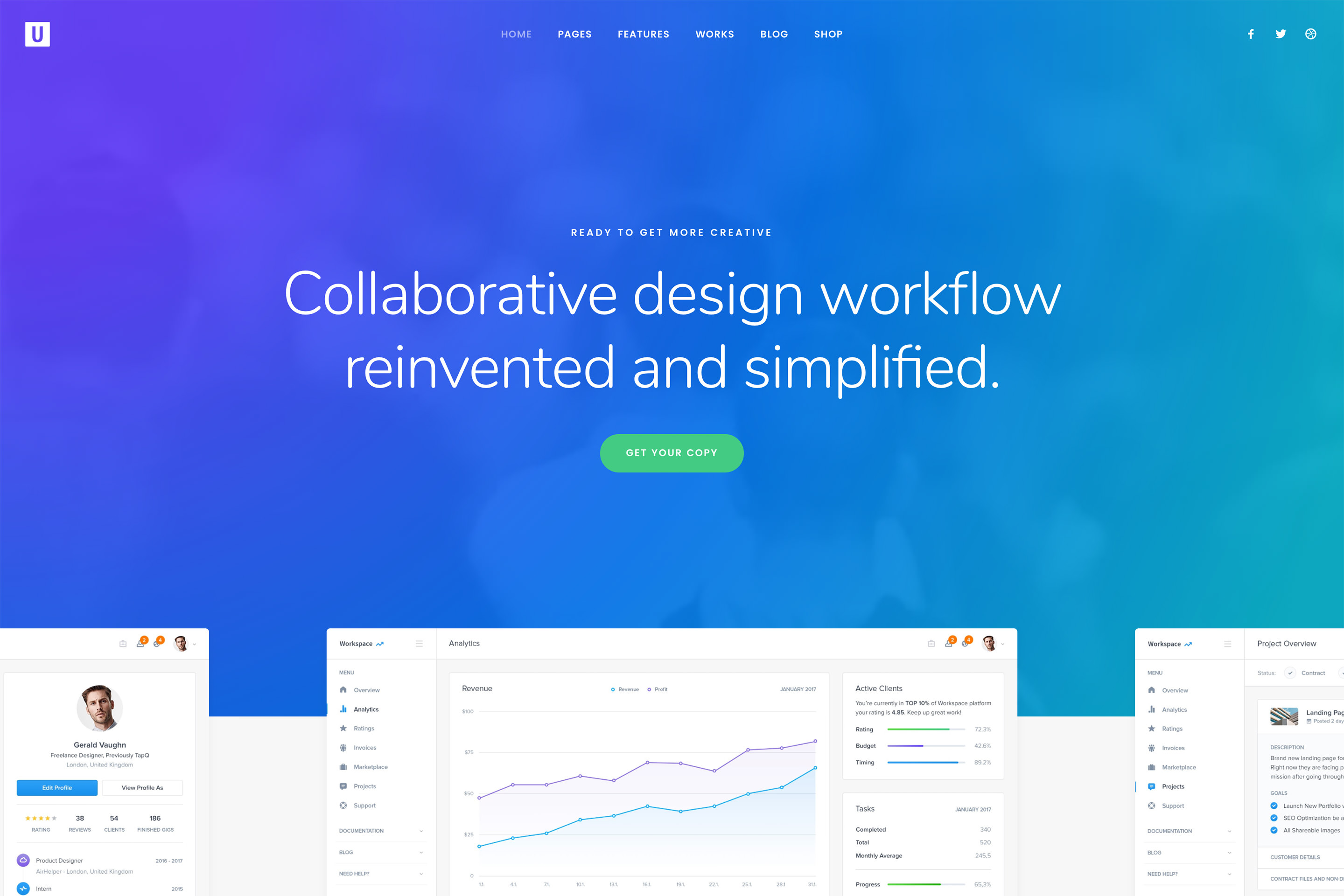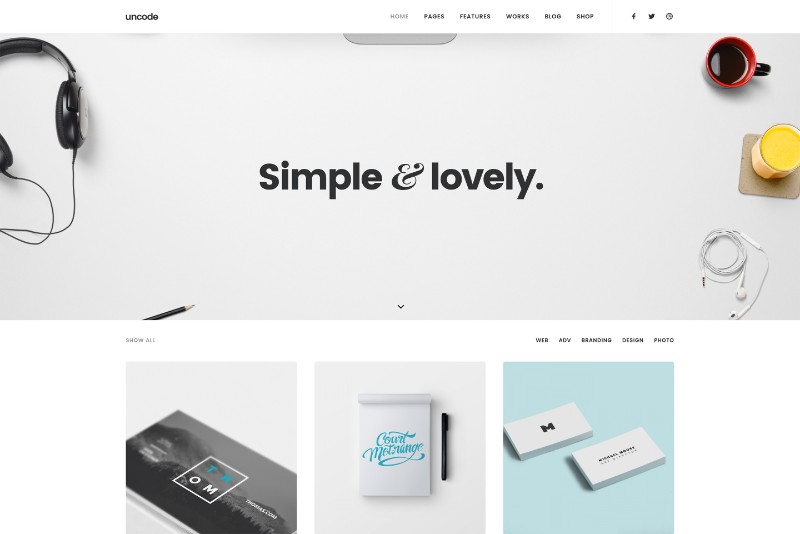For entrepreneurs taking their first steps into the business arena, a startup website must help them build their brand, market their products/services, nurture an impeccable reputation, and promote their values. Startup websites are key to their future success.
The best startup websites drive a lot of traffic and get to the top of search engine rankings fast. Whether you hire a designer, or you handle startup website design on your own, you must make sure you do everything in your power to end up with a performing website.
Prepare Adaptive Content

People access the internet from a full range of devices, and, as a startup, you want your website to look good on each of those devices, irrespective of screen size. Within this context, you need to be ready to adopt a responsive design for your website.
Responsive web design refers to making web pages perform well on a variety of devices and screen sizes. It makes perfect sense to embraces this approach since the world is going mobile.
Prepare adaptive content for your website that will render well on any device or screen size.
Stay Intentional with Social Media

A startup business should be on the leading social media networks, and your startup website should link your customers to your social media pages. There is no question about that. What customers or potential clients find on your social media pages is essential.
The content of your social media must be aligned with your business and marketing strategy in such a way that social media pages represent your business just as your startup website represents your business. You don’t want a neglected social media stream to represent you.
You need to make sure that your social media activity reflects your business’ values and principles. Post only high-quality, original content. Post regularly, not once every two years. Be ready to provide clients/potential clients with support via social media channels.
Engage your customers and potential customers on your social media pages. Pay attention to where you choose to incorporate your social media icons on your startup website. Make icons visible on your startup company website and check other startup sites for inspiration.
The importance of Keeping it Simple
Keep it Simple, Stupid, aka KISS is an approach that has proved its validity in many areas of life and business. Web design for startups makes no exception. It is a sound principle that all startups should embrace if they don’t want to pay a fortune for their startup web design.
There are many benefits of a simple design for your startup site. The most obvious one is its cost-effectiveness, of course, since a simple website is easier to create. BUT, a simple website will stamp on the memory longer and quicker and is also more flexible and daring.
When a design is simple, is also mobile-friendly. If you want a startup website with a simple design, you will need to identify the key elements that you want to showcase. A simple design carries a concise, but a strong message, which makes your startup the visible.
Don’t overwhelm your visitors with a lot of content because it will only confuse them. Supply a simple, clean, and familiar layout for your startup website, such as a two-column layout with a rightward sidebar and top navigation bar. It is an evergreen layout.
Another way you can ensure a simple design is to stick to one primary color and one secondary color. Remember that your website for startup is not a test canvas where you can mix colors chaotically. Forget about subtleties and use vibrant colors and sharp contrasts.
The conclusion is quite simple: keep it simple! Don’t overdo it, not with an entire palette of colors, not with a complicated layout, and not with a ton of unfocused content.
Create a Design Strategy
![]()
Enthusiasm is one of the features that define entrepreneurs. It is a constructive attribute that fuels their business journey over the years. However, when it comes to the design of a website for startups, don’t allow enthusiasm to take over strategic designing and planning.
Before plunging into the actual design of your startup website, you must generate a strategy first. It is unproductive to go back and correct when you can do things right from the start. Define the most relevant features of your website based on the answers to these questions:
- What is the message you want to communicate to your audience?
- What key features do you want to showcase?
- What are the characteristics that your target audience expects to see?
After you provide answers, you will be able to outline a strategy for your website design.
Make the Website Responsive

It is important to have a mobile-friendly website since the largest part of traffic comes from mobile gadgets. You will want to make your website easy to navigate and to look great on the small screens of your mobile users. The solution? Responsive web design is the solution.
The most important thing about responsive web design other than implementing it is when you implement it. Make your website responsive from the beginning, instead of making changes later. What looks good on a small screen, looks even better on a larger screen.
Keep Things Structured

When a visitor lands on your startup website, he/she wants to find what they need quickly and easily. A well-structured website can make that possible. There are several elements to keep a website looking organized as far as the visitor is concerned:
- A menu with links to all pages of your startup website
- Information that is displayed in a clear and bold manner
- No large chunks of text; use large fonts and bullet points for relevant info
Think in Advance

Try to envision the issues your visitors may encounter on a website, issues that will eventually frustrate them enough to make them leave the respective website.
Think proactively, rather than reactively. Why wait for issues to occur to fix them when you could have a solution in place long before they occur? Here are some things that you could develop solutions for from the beginning:
- Keyboard triggers
- Mobile friendly CTA buttons
- mobile-friendly stylesheets
- touchscreen-friendly interfaces
- Quick-loading content on slower connections.
Yes, plugins and other solutions may optimize your startup website for a mobile-friendly experience, they can’t deliver the ultimate experience that you want your potential and existing clients to enjoy.
List with Main Directories

Let’s say you’ve put together an appealing, clean, fast-loading, simple startup website? How will potential clients find it? You are only starting up, so you don’t have a reputation yet. Listing with free, local, and industry-specific directories may be what you need.
Directory listings can push you at the forefront of search engines, but you need to provide original and explicit descriptions of your business with each directory listing. Copying and pasting the same description on all directories won’t do the trick.
Search engines may identify you as spam when their bots give your descriptions a quick look.
Perform Beta Trials

Website development is a process that entails several stages, and you have to make the most of each stage. For example, the beta and in-house trials are essential in the testing stage. It’s easy to identify inconsistencies in this stage and then find solutions accordingly.
Ensure SEO Compliance

For a startup, more than other businesses, SEO compliance is very important to achieve visibility. There is no going around the matter of SEO compliance, which must be performed according to high standards established by applications such as Google Analytics.
The internet is packed with businesses, but only those who rank high in search engine results are successful. Involve the best website designers to equip your website with the vanguard design services, including SEO. You need only the best so don’t settle for less.
Ending thoughts on designing a startup website
What does a startup website design entail? Focus, Planning, and Talent. You need to identify your key features, i.e., where you want your attention focused – your focus, get the best in the field to work on making your focus look good – talent, and think in advance – planning.
If you stick to this strategy, you will generate a robust, high-quality, memorable design. If you add appeal, user-friendliness, and fast loading to your design, and you will provide existing and potential clients with a complete experience that will help your business grow.
The Undsgn Newsletter
Sign up to stay up to date with the latest news!
(You will be forwarded to our subscribe form hosted by Mailchimp)
You might also like...
April 24, 2018
How to design a website like a professional
Having a well-weaved mix of the designer style and the website’s user…
May 29, 2018
Responsive Web Design Tips & Tricks to use this year
This is the age of mobility that we are living in and people mobile…
April 22, 2018
Responsive Web Design: Tips and Best practices
Having a responsive web design is a necessity nowadays, compared to…




